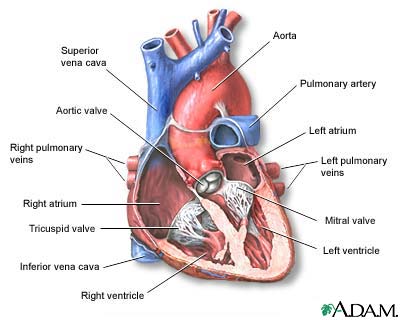Symptoms & Signs
Patients with ventricular septal defects may not have symptoms. However, if the hole is large, symptoms, the baby often has symptoms related to heart failure.
The most common symptoms include:
- Shortness of breath
- Fast breathing
- Hard breathing
- Paleness
- Failure to gain weight
- Fast heart rate
- Sweating while feeding
- Frequent respiratory infections
Diagnosis & Tests
Listening with a stethoscope usually reveals a heart murmur (the sound of the blood crossing the hole). The loudness of the murmur is related to the size of the defect and amount of blood crossing the defect.
Tests may include:
- Chest x-ray — looks to see if there is a large heart with fluid in the lungs
- ECG — shows signs of an enlarged left ventricle
- Echocardiogram — used to make a definite diagnosis
- Cardiac catheterization (rarely needed, unless there are concerns of high blood pressure in the lungs)
- MRI of the heart — used to find out how much blood is getting to the lungs
Pictures & Images
Heart, section throughthe middle
The interior of the heart is composed of valves, chambers, and associated vessels.
-
Ventricular septal defect: Overview, Causes
-
Ventricular septal defect: Symptoms & Signs, Diagnosis & Tests
-
Ventricular septal defect:Treatment
Review Date : 6/7/2008
Reviewed By : David C. Dugdale, III, MD, Professor of Medicine, Division of General Medicine, Department of Medicine, University of Washington School of Medicine; and Linda Vorvick, MD, Seattle Site Coordinator, Lecturer, Pathophysiology, MEDEX Northwest Division of Physician Assistant Studies, University of Washington School of Medicine. Also reviewed by David Zieve, MD, MHA, Medical Director, A.D.A.M., Inc.
